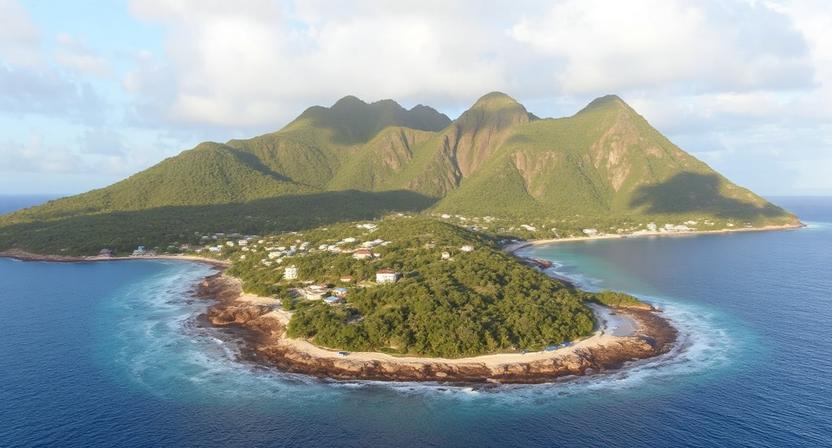How Amira Zhanat is Exploring Environmental Policy Through Research and Fellowship – Georgetown University in Qatar

Report on Student Engagement with Sustainable Development Goals through Environmental Policy Fellowship
1.0 Introduction: Student Profile and SDG Alignment
This report details the activities of Amira Zhanat, a student at Georgetown University in Qatar (SFS’27), whose academic and professional pursuits are directly aligned with the United Nations Sustainable Development Goals (SDGs). Her work demonstrates a focused effort to address complex environmental challenges through an interdisciplinary approach, integrating environmental science, policy, and economics. Her engagement primarily supports the following SDGs:
- SDG 4: Quality Education – Pursuing specialized, high-level education in environmental policy.
- SDG 13: Climate Action – Centering her studies and research on climate change legislation, corporate sustainability, and mitigation strategies.
- SDG 17: Partnerships for the Goals – Engaging with scientists, policymakers, and communities to foster collaborative solutions.
2.0 Academic Framework for Climate Action
From the outset of her academic career, Ms. Zhanat has structured her foreign service degree to concentrate on climate change. This specialized educational path provides a robust foundation for contributing to SDG 13 (Climate Action).
2.1 Interdisciplinary Concentration
The student designed a unique academic concentration that merges environmental science with policy and economics. This approach is critical for developing holistic solutions to climate change, reflecting a core principle of the 2030 Agenda for Sustainable Development.
2.2 Fellowship Coursework
Participation in the Environmental Science and Policy Fellowship, offered by Georgetown’s Earth Commons Institute, has provided advanced training. Key coursework contributes to specific SDG targets:
- Environmental Science Policy: This course involves the analysis of congressional hearings and climate legislation, providing direct insight into the mechanisms for implementing SDG 13.
- Business and Climate Change: This course examines the integration of sustainability into corporate operations. It addresses aspects of SDG 8 (Decent Work and Economic Growth) by exploring green finance and sustainable business models.
3.0 Practical Application and Professional Development
Ms. Zhanat is translating academic knowledge into practical experience through a competitive fellowship in Washington, DC. The program is structured to build capacity for careers that advance global sustainability.
3.1 Internship and Ecosystem Health
An internship with the Ecological Health Network allows for direct application of classroom learning. Her contributions to the Healthy Ecosystems, Healthy People project underscore the critical link between environmental and human well-being, directly supporting:
- SDG 3: Good Health and Well-being – By exploring how ecosystem restoration improves public health outcomes.
- SDG 15: Life on Land – By focusing on the restoration and sustainable management of terrestrial ecosystems.
4.0 Global Research Initiatives and Policy Impact
The student’s engagement extends beyond the fellowship to include international research, further broadening her contribution to the global goals.
4.1 International Fieldwork and Research
Previous grant-funded research and fieldwork have addressed critical environmental issues in various global contexts:
- Kazakhstan: Research on flood vulnerability contributes to SDG 11 (Sustainable Cities and Communities) by focusing on climate resilience and adaptation.
- Indonesia and Greece: Grassroots course fieldwork provided practical experience in diverse environmental settings.
This research was presented at the University of Pennsylvania National Research Conference and is planned for expansion into an Honors Thesis, demonstrating a commitment to advancing knowledge in support of SDG 4 (Quality Education).
4.2 Policy Observation and Partnerships
Observing the legislative process in Washington, DC has provided practical insight into the challenges and opportunities of climate policy. Witnessing collaboration between scientists, policymakers, and local communities highlights the importance of SDG 17 (Partnerships for the Goals) in translating research and advocacy into effective legislation.
Analysis of Sustainable Development Goals in the Article
1. Which SDGs are addressed or connected to the issues highlighted in the article?
-
SDG 4: Quality Education
The article is centered on Amira Zhanat’s educational journey at Georgetown University. It highlights her specialized degree in foreign service focusing on climate change, her participation in an “Environmental Science and Policy Fellowship,” and her advanced coursework. This directly relates to providing inclusive and equitable quality education and promoting lifelong learning opportunities for sustainable development.
-
SDG 13: Climate Action
This is the core theme of the article. Amira’s entire focus is on “issues around climate change,” combining “environmental science, policy, and economics” to pursue “climate action.” Her coursework involves analyzing “climate legislation,” and her experiences revolve around understanding how to address climate issues through policy and governance.
-
SDG 15: Life on Land
The article mentions Amira’s internship with the Ecological Health Network and her contribution to the “Healthy Ecosystems, Healthy People project,” which “explores how ecosystem restoration supports public health.” This directly connects to the goal of protecting, restoring, and promoting the sustainable use of terrestrial ecosystems.
-
SDG 3: Good Health and Well-being
The connection is made through the “Healthy Ecosystems, Healthy People project.” By exploring the link between “ecosystem restoration” and “public health,” the work described in the article contributes to ensuring healthy lives and promoting well-being.
-
SDG 17: Partnerships for the Goals
The article concludes by emphasizing the importance of collaboration. Amira notes that it is “encouraging to see scientists, policymakers, and local communities working together.” This reflects the essence of SDG 17, which focuses on strengthening the means of implementation and revitalizing global partnerships for sustainable development.
2. What specific targets under those SDGs can be identified based on the article’s content?
-
Target 4.7: “By 2030, ensure that all learners acquire the knowledge and skills needed to promote sustainable development, including, among others, through education for sustainable development…”
Amira’s specialized education, which allows her to “design a concentration that combined all of these dimensions of climate action,” and the “Environmental Science and Policy Fellowship” are perfect examples of educational programs that equip learners with the knowledge and skills for sustainable development.
-
Target 13.3: “Improve education, awareness-raising and human and institutional capacity on climate change mitigation, adaptation, impact reduction and early warning.”
The fellowship program, which “prepares students for careers at the intersection of science, diplomacy, and governance,” and Amira’s coursework analyzing “congressional hearings and climate legislation” are direct efforts to build human and institutional capacity to tackle climate change.
-
Target 15.1: “By 2020, ensure the conservation, restoration and sustainable use of terrestrial and inland freshwater ecosystems and their services, in particular forests, wetlands, mountains and drylands, in line with obligations under international agreements.”
Her internship project focusing on “ecosystem restoration” directly aligns with this target’s goal of restoring terrestrial ecosystems.
-
Target 17.17: “Encourage and promote effective public, public-private and civil society partnerships, building on the experience and resourcing strategies of partnerships.”
The article’s observation of “scientists, policymakers, and local communities working together” is a direct reference to the multi-stakeholder partnerships that this target aims to promote.
3. Are there any indicators mentioned or implied in the article that can be used to measure progress towards the identified targets?
-
Implied Indicator for Target 4.7: The existence and number of specialized academic programs and fellowships focused on sustainable development.
The article highlights the “Environmental Science and Policy Fellowship” and a curriculum that combines “environmental science, policy, and economics.” The availability of such programs serves as an indicator of the extent to which education for sustainable development is integrated into higher education.
-
Implied Indicator for Target 13.3: The number of students and professionals receiving training in climate policy and sustainability.
Amira represents a cohort of students being prepared for careers in climate action. The course “Business and Climate Change,” which features “professionals working in green finance, consulting, and sustainability management,” implies a growing number of trained individuals in these fields, which can be measured as an indicator of capacity building.
-
Implied Indicator for Target 15.1: The number and scope of projects focused on ecosystem restoration.
The “Healthy Ecosystems, Healthy People project” is a specific initiative mentioned. The number of such projects that explore and implement ecosystem restoration can be used as a metric to track progress.
-
Implied Indicator for Target 17.17: The number of multi-stakeholder collaborations on sustainable development issues.
The article explicitly mentions the collaboration of “scientists, policymakers, and local communities.” Tracking the formation and success of such partnerships is a way to measure progress toward this target.
Summary of Findings
| SDGs | Targets | Indicators |
|---|---|---|
| SDG 4: Quality Education | 4.7: Ensure all learners acquire knowledge and skills for sustainable development. | The existence and number of specialized academic programs and fellowships focused on sustainable development (e.g., the Environmental Science and Policy Fellowship). |
| SDG 13: Climate Action | 13.3: Improve education and human/institutional capacity on climate change. | The number of students and professionals receiving training in climate policy, green finance, and sustainability management. |
| SDG 15: Life on Land | 15.1: Ensure the conservation, restoration, and sustainable use of terrestrial ecosystems. | The number and scope of projects focused on ecosystem restoration (e.g., the “Healthy Ecosystems, Healthy People project”). |
| SDG 3: Good Health and Well-being | (Implied) Strengthen capacity for management of health risks. | Research and projects linking ecosystem health to public health. |
| SDG 17: Partnerships for the Goals | 17.17: Encourage and promote effective public, public-private, and civil society partnerships. | The number of multi-stakeholder collaborations involving scientists, policymakers, and local communities. |
Source: qatar.georgetown.edu
What is Your Reaction?
 Like
0
Like
0
 Dislike
0
Dislike
0
 Love
0
Love
0
 Funny
0
Funny
0
 Angry
0
Angry
0
 Sad
0
Sad
0
 Wow
0
Wow
0




















































.jpg.webp?itok=0ZsAnae9#)

























